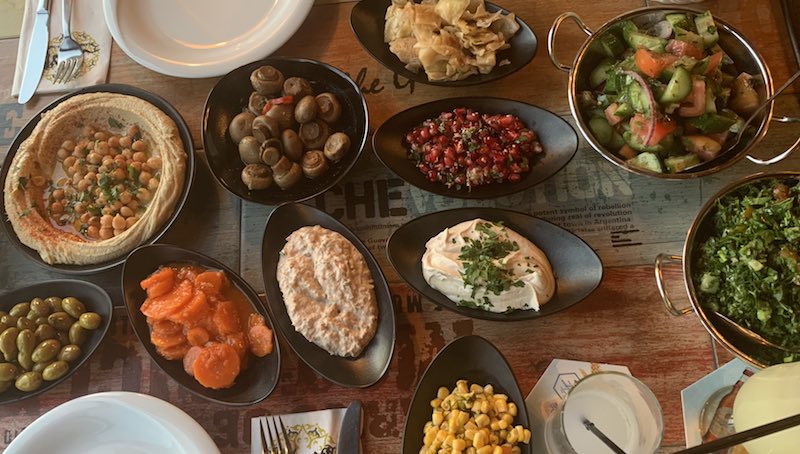Hello ladies and gents this si the Viking telling you that today we are talking about
ISRAELI CUISINE
Israeli cuisine comprises both local dishes and dishes brought to Israel by Jews from the Diaspora. Since before the establishment of the State of Israel in 1948, and particularly since the late 1970s, an Israeli Jewish fusion cuisine has developed.
Israeli cuisine has adopted, and continues to adapt, elements of various styles of Arab cuisine and diaspora Jewish cuisine, particularly the Mizrahi, Sephardic and Ashkenazi styles of cooking. It incorporates many foods traditionally included in other Middle Eastern and Mediterranean cuisines, so that spices like za'atar and foods such as falafel, hummus, msabbha, shakshouka and couscous are now widely popular in Israel.
Other influences on the cuisine are the availability of foods common to the Mediterranean region, especially certain kinds of fruits and vegetables, dairy products and fish; the tradition of keeping kosher; and food customs and traditions specific to Shabbat and different Jewish holidays, such as challah, jachnun, malawach, gefilte fish, hamin, me'orav yerushalmi and sufganiyot.
New dishes based on agricultural products such as oranges, avocados, dairy products and fish, and others based on world trends have been introduced over the years, and chefs trained abroad have brought in elements of other international cuisines.
Geography has a large influence on Israeli cuisine, and foods common in the Mediterranean region, such as olives, wheat, chickpeas, dairy products, fish, and vegetables such as tomatoes, eggplants, and zucchini are prominent in Israeli cuisine. Fresh fruits and vegetables are plentiful in Israel and are cooked and served in many ways.
There are various climatic areas in Israel and areas it has settled that allow a variety of products to be grown. Citrus trees such as orange, lemon and grapefruit thrive on the coastal plain. Figs, pomegranates and olives also grow in the cooler hill areas.
The subtropical climate near the Sea of Galilee and in the Jordan River Valley is suitable for mangoes, kiwis and bananas, while the temperate climate of the mountains of the Galilee and the Golan is suitable for grapes, apples and cherries.
Israeli eating customs also conform to the wider Mediterranean region, with lunch, rather than dinner, being the focal meal of a regular workday.
"Kibbutz foods" have been adopted by many Israelis for their light evening meals as well as breakfasts, and may consist of various types of cheeses, both soft and hard, yogurt, labne and sour cream, vegetables and salads, olives, hard-boiled eggs or omelets, pickled and smoked herring, a variety of breads, and fresh orange juice and coffee.
In addition, Jewish holidays influence the cuisine, with the preparation of traditional foods at holiday times, such as various types of challah (braided bread) for Shabbat and festivals, jelly doughnuts (sufganiyot) for Hanukah, the hamantaschen pastry (oznei haman) for Purim, charoset, a type of fruit paste, for Passover, and dairy foods for Shavuot.
The Shabbat dinner, eaten on Friday, and to a lesser extent the Shabbat lunch, is a significant meal in Israeli homes, together with holiday meals.
Although many, if not most, Jews in Israel do not keep kosher, the tradition of kashrut strongly influences the availability of certain foods and their preparation in homes, public institutions and many restaurants, including the separation of milk and meat and avoiding the use of non-kosher foods, especially pork and shellfish.
During Passover, bread and other leavened foods are prohibited to observant Jews and matza and leaven-free foods are substitutedand as always have a chilled day from the Viking

Comments
Post a Comment